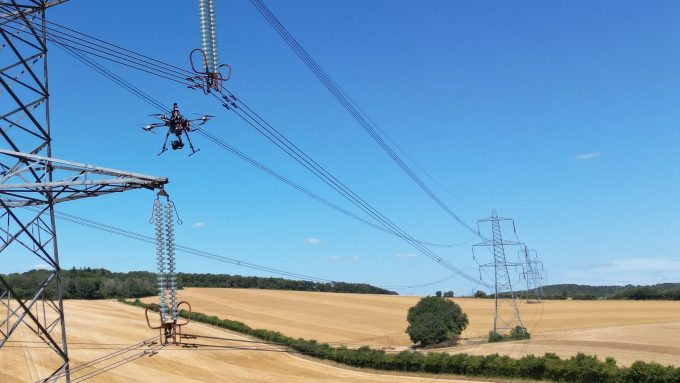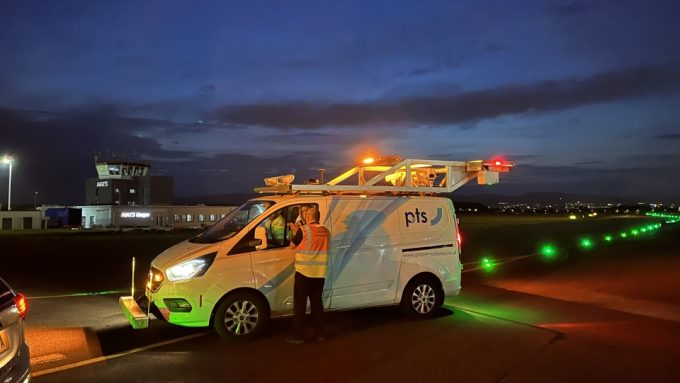
Security scanning innovator boosted by air mobility accelerator

Eight out of ten companies taking part in year three of the Future of Air Mobility Accelerator say they expect to increase revenues in the long run as a direct result of participating in the programme.
In addition, two thirds of the SMEs surveyed agree that the accelerator helped to create connections that were essential to help develop their solutions. The same proportion also reported a belief they would have been unable to secure a trial at a live airport without help from the programme, and that the accelerator helped them to create jobs.
One SME involved in the programme’s third year is Sequestim, which has developed a walk-through passenger security screening system for airports that promises to cut screening times to no more than four seconds.
The company – a spin-out from Cardiff University – installed a prototype scanner at Glasgow Airport last summer that employed technology used in astronomy to scan the human body. It detects all objects hidden beneath and between layers of clothing, no matter their size or what they’re made of.
Over two months, it processed 15,000 passengers and generated a library of 75,000 still frame images to demonstrate the threat detection capabilities of the technology, and to spot trends with any ‘false positive’ alarms triggered using the system.

Taking a fresh look at scanner technology
“Our system works rather differently from body scanners you currently see at airports,” explains company chief executive Ken Wood. “Existing scanners require passengers to adopt a ‘collaborative pose’ (hands in the air) which means you have to stop and wait.
“However, we use very sensitive detector technology that looks at the very tiny amounts of electromagnetic power emitted by your body.”
The new system trialled in Glasgow could even detect a five pence piece in the pocket of a passenger walking through at pace, says Ken. “Our imaging technology is also capable of noticing what is and isn't a threat, promising to further speed up the process of passing through security.”
Ken and colleagues at Cardiff University started developing the idea over 10 years ago after realising that astronomy technology sensitive enough to spot a lightbulb on the moon could be used to detect guns and knives hidden under jackets in a faster time than airport body scanners currently allow.
He says his ‘Eureka’ moment came when developing new instruments for telescopes using the terahertz – or far infrared – region of the electromagnetic spectrum. Radiation at such wavelengths passes through gas and dust in outer space and can, he explained, also pass through man-made materials including clothing.
An end to removing coats at security?
Ken says developments in technology could one day lead to a situation where – depending on the regulations – people no longer to have to remove personal belongings from their pockets or take off their coats and jackets. “It doesn't matter how many layers of clothing you are wearing, our scanners see through them.”
He claims that in imaging terms, his company’s system is ahead of anything else and could supersede technology currently in use at airports.
“But in order to get to market, we need to create an automated threat detection system based on AI and machine learning algorithms; and for that we needed to put the scanner in an airport.
“That is exactly what the Future of Air Mobility programme allowed us to do. Getting real data about real air passengers was crucial.”Ken Wood, chief executive, Sequestim
Ken says he was delighted by the support of security managers at Glasgow Airport regarding the technology. “The real value of this project was to have an airport team understand what we can do, and how we could help to transform the design of airport security. To be put in touch with those people was a real boon.”
Moving forward, Ken would like to demonstrate the scanning of passengers from multiple angles.
He adds that the company is half-way through a seed investment round, with several investors interested, and is looking to start work on a prototype device ready for the market next year.
If successful, he says the company’s technology “will reduce the cost of providing security and improve the airport experience”.
Find out more about year three of the Future of Air Mobility Accelerator.
Read about the work of another SME involved in the programme.





